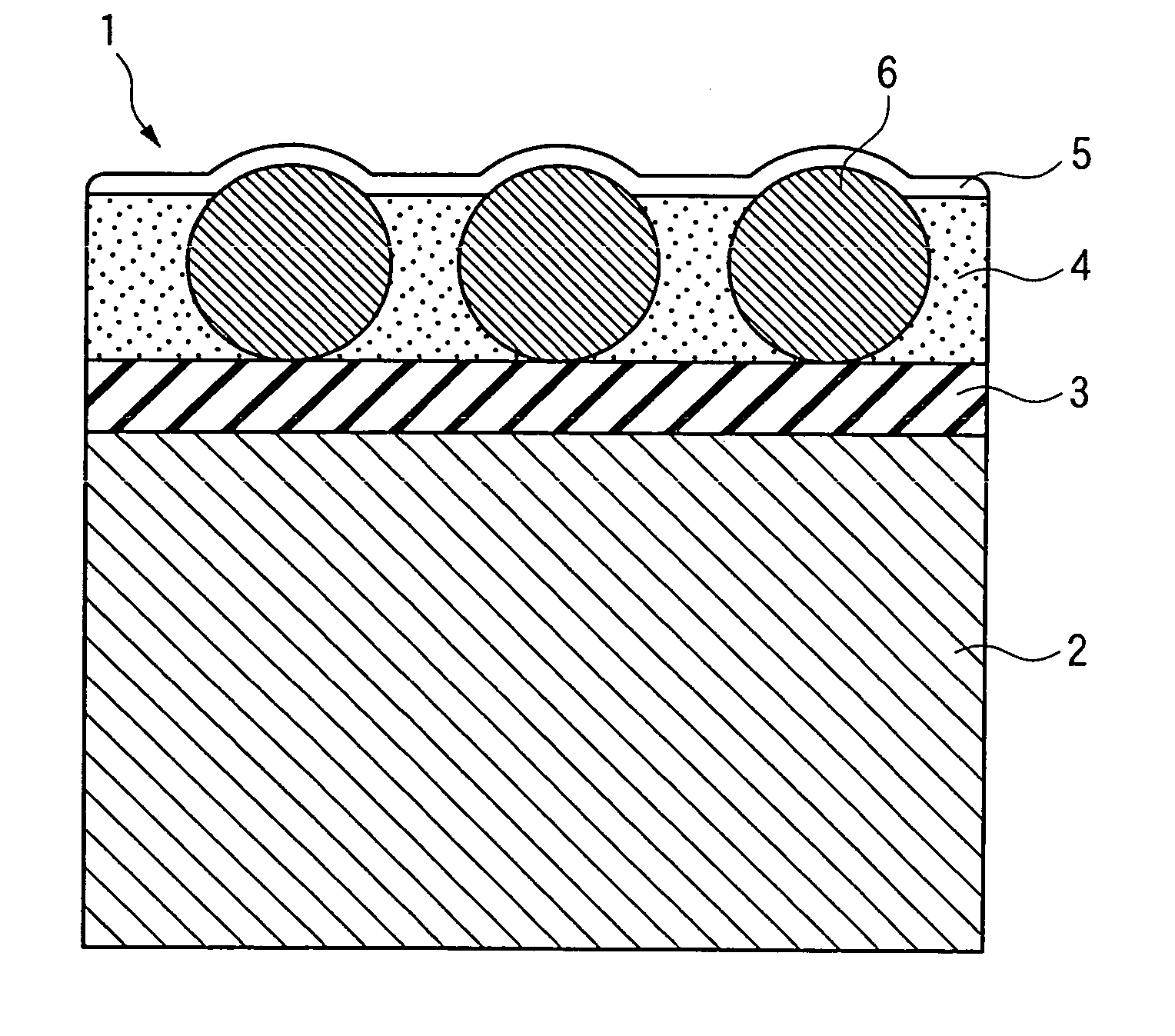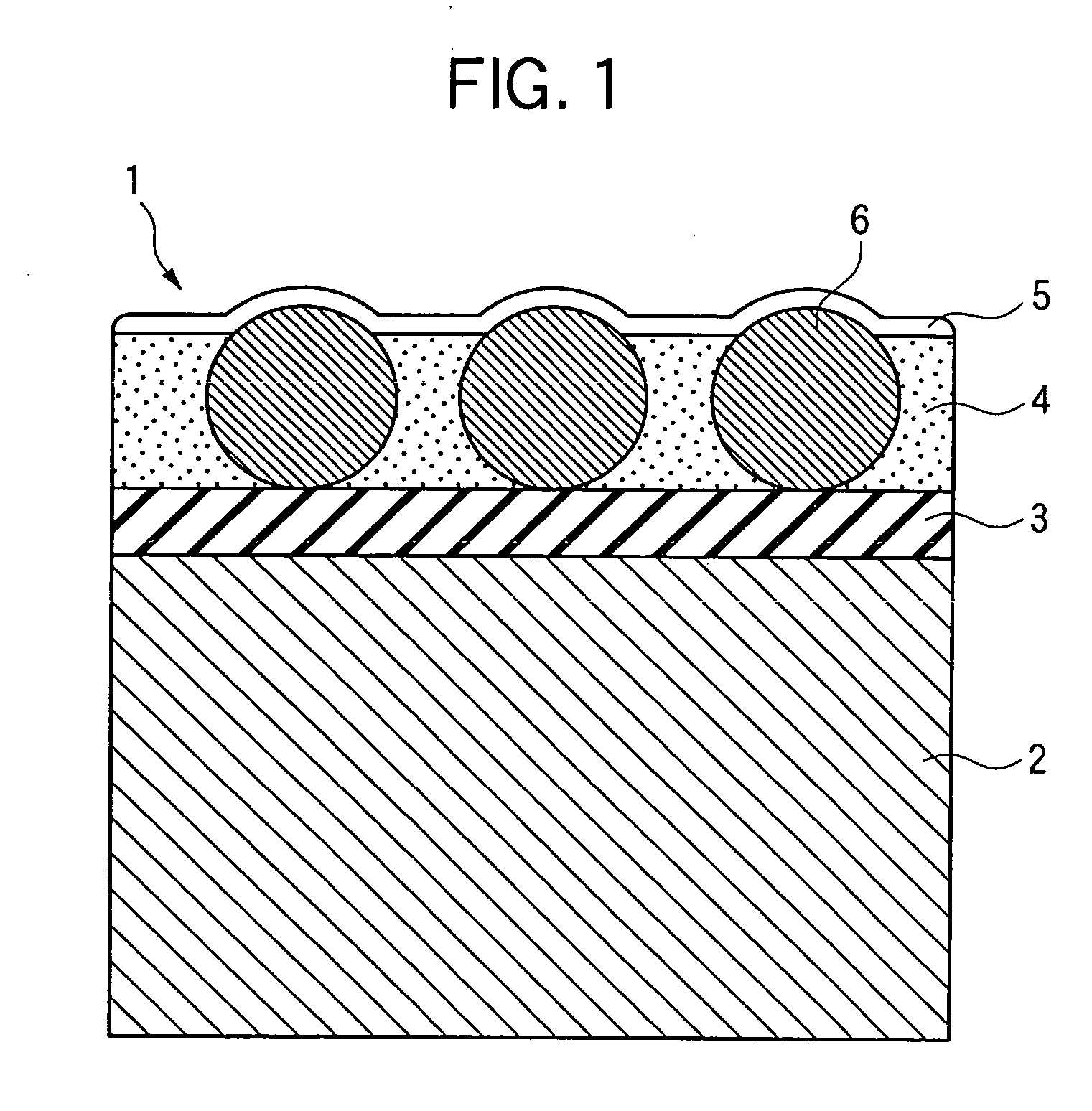Antireflection film, polarizing plate and display device
- Summary
- Abstract
- Description
- Claims
- Application Information
AI Technical Summary
Benefits of technology
Problems solved by technology
Method used
Image
Examples
example 1
[0261] A smooth hard coat layer α, antiglare hard coat layers A to J and U to Z, and low refractive index layers 1 and 2 were coated in the following manner. The combinations of layers thus accumulated are shown in Table 1 below.
(1) Coating of Smooth Hard Coat Layer
[0262] A triacetyl cellulose film having a thickness of 80 μm (TAC-TD80U, produced by Fuji Photo Film Co., Ltd.) in a roll form was wound off, and the aforementioned smooth hard coat layer coating composition was coated thereon by using a microgravure roll having a gravure pattern having a diameter of 50 mm with a line number of 180 per inch and a depth of 40 μm and a doctor blade under conditions of a gravure roll rotation number of 30 rpm and a conveying velocity of 10 m / min. After drying the coated layer at 120° C. for 2 minutes, the coated layer was cured by irradiating an ultraviolet ray of an illuminance of 400 mW / cm2 and a dose of 300 mJ / cm2 under nitrogen purge with an oxygen concentration of 0.1% or less by us...
example 2
[0346] A PVA (polyvinyl alcohol) film was immersed in an aqueous solution containing 2.0 g / L of iodine and 4.0 g / L of potassium iodide at 25° C. for 240 seconds and then immersed in an aqueous solution containing 10 g / L of boric acid at 25° C. for 60 seconds. The film was then introduced into a tenter stretching machine having the constitution shown in FIG. 2 to stretch by 5.3 times. The tenter was inflected with respect to the stretching direction as shown in FIG. 2 and then the width was maintained constant. The film was dried in an 80° C. atmosphere and then released from the tenter. The difference in conveying velocity between the tenter clips on both side thereof was less than 0.05%, and the angle between the center line of the film thus introduced and the center line of the film transferred to the next process was 46°. The difference in travels between the film retaining means on both sides of the tenter |L1−L2| was 0.7 m, and the substantial width of the film at the end of st...
example 3
[0349] Polarizing plates were produced in the same manner as in Example 2 except that, in the production of the polarizing plate having an absorption axis descending by 45°, the films of the samples 101 to 112 and 119 to 123 of the invention in Example 1 having been subjected to the saponification treatment were used instead of Fujitac, produced by Fuji Photo Film Co., Ltd. (cellulose triacetate film having a retardation value of 3.0 nm). Liquid crystal display devices having the antireflection layer on the outermost surface were produced by using the polarizing plates. Excellent contrast was obtained without reflection of outside light, and good visibility was obtained with indistinct mirrored images owing to the antiglare property, as similar to Example 2.
PUM
| Property | Measurement | Unit |
|---|---|---|
| Particle diameter | aaaaa | aaaaa |
| Particle diameter | aaaaa | aaaaa |
| Refractive index | aaaaa | aaaaa |
Abstract
Description
Claims
Application Information
 Login to View More
Login to View More - R&D
- Intellectual Property
- Life Sciences
- Materials
- Tech Scout
- Unparalleled Data Quality
- Higher Quality Content
- 60% Fewer Hallucinations
Browse by: Latest US Patents, China's latest patents, Technical Efficacy Thesaurus, Application Domain, Technology Topic, Popular Technical Reports.
© 2025 PatSnap. All rights reserved.Legal|Privacy policy|Modern Slavery Act Transparency Statement|Sitemap|About US| Contact US: help@patsnap.com



